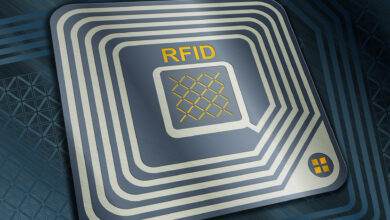All 5G Security & mIoT Security Posts
-
5G Security
5G Health Risks – Health, Wealth and Tin Foil Hats
The rollout of 5G is one of the most anticipated events in humanity’s technological history. But what about the 5G health concerns? It’s the night before Halloween in 1938 and, as the tale goes, radio audiences tuning into Orson Welles’ reading of War of the Worlds are driven to panic. Apparently listening to an ordinary radio broadcast, the public hear of an unfolding Martian invasion…
Read More » -
5G Security
5G and AI – Getting Smart About 5G and AI in Canada
Canada has been investing in machine learning and artificial intelligence (AI) for longer than most of the industrialized world. Dr. Geoff Hinton of Google helped ignite the field of graphics processing unit (GPU) deep learning at the University of Toronto. Then he became chief scientific advisor to the Vector Institute, which in collaboration with the University, aims to produce the largest number of deep learning…
Read More » -
5G Security
NFC Security 101 (Non-5G IoT Connectivity Options)
NFC is a short range two-way wireless communication technology that enables simple and secure communication between electronic devices embedded with NFC microchip. NFC technology operates in 13.56 megahertz and supports 106, 212, or 424 Kbps throughput. There are three available modes of NFC communication: Read/write (e.g. for reading tags in NFC posters) Card emulation (e.g. for making payments) Peer-to-peer (e.g. for file transfers) There is no need for…
Read More » -
5G Security
RFID Security 101 (Non-5G IoT Connectivity Options)
Radio-Frequency Identification (RFID) is a technology commonly used for identification, status administration and management of different objects. It is important for people identification, as it is commonly deployed in the latest biometric passports. It operates in several frequency bands like Low frequency band from 125 kHz to 134 kHz, High frequency band with 13.56MHz working frequency, Ultra-high frequency band with 433 MHz working frequency and 860…
Read More » -
AI Security
AI and 5G: AI at the 5G Core – A Double-Edged Sword
If you’ve ever been to an expensive restaurant and ordered a familiar dish like, say, lasagna, but received a plate with five different elements arranged in a way that does not at all resemble what you know as lasagna, then you have probably tasted deconstructionism. This approach to cuisine aims to challenge the way our brain makes associations, to break existing patterns of interpretation and,…
Read More » -
5G Security
Wi-Fi Security 101 (Non-5G IoT Connectivity Options)
The Wi-Fi represents wireless technology that includes the IEEE 802.11 family of standards (IEEE 802.11a, IEEE 802.11b, IEEE 802.11g, IEEE 802.11n, IEEE 802.11ac, etc.). Within 50m range, it operates in 2.4 GHz and 5GHz frequency bands,. This technology was developed for wireless networking of computer devices and is commonly called WLAN (Wireless Local Area Network), where the communication is realized between wireless routers typically connected…
Read More » -
5G Security
Bluetooth Security 101 (Non-5G IoT Connectivity Options)
Bluetooth is short-range wireless communications technology based on the IEEE 802.15.1 protocol. It works in a crowded license free 2.4 GHz frequency band and shares this resource with many other technologies. Bluetooth is the optimal solution for establishing small wireless networks called Piconets, by connecting two Bluetooth devices. One of these nodes is Master that can be connected via Bluetooth link to 7 other Bluetooth…
Read More » -
5G Security
Zigbee Security 101 (Non-5G IoT Connectivity Options)
Zigbee technology introduction Zigbee is wireless PAN (Personal Area Network) technology developed to support automation, machine-to-machine communication, remote control and monitoring of IoT devices. It evolved from IEEE 802.15.4 wireless standard and supported by the ZigBee Alliance. IEEE 802.15.4 standard determines specifications for the physical and data link layer and Zigbee Alliance provides standards from network layer to application layer. While Zigbee determines the contents…
Read More »







